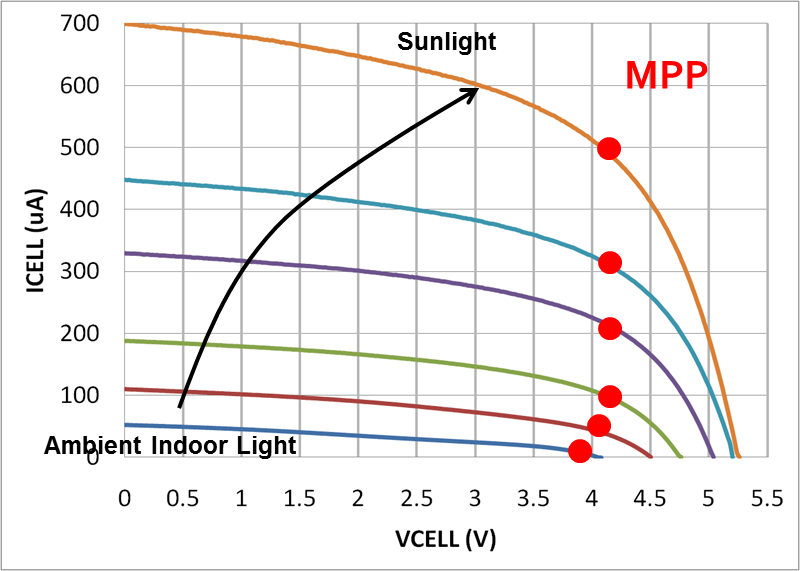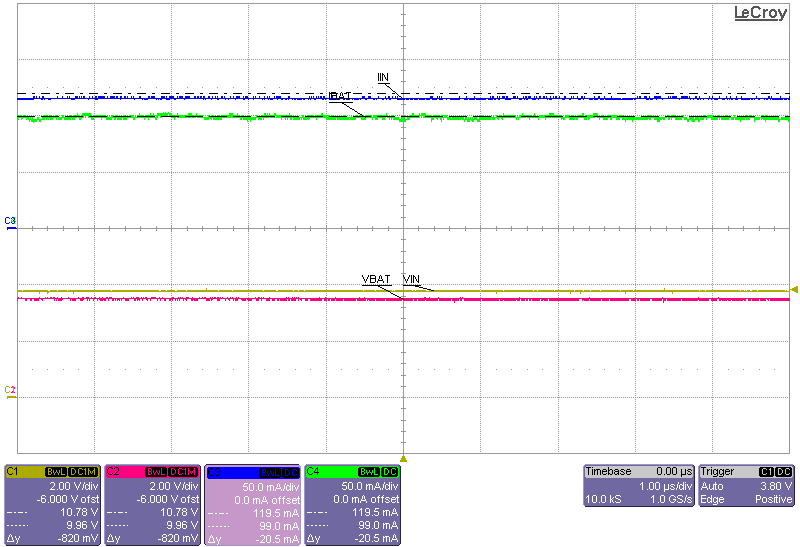Hi
I am using the Demo Board BQ24210EVM together with a LiPo battery and a solar cell with 6 V open cirquit. The parameters are: Iset = 500 mA (default on the DevBoard), self-enabled (PG connected to EN), VDPM pin floating as suggested in the datasheet on page 20. I tried the TS pin at 30% of VTSB according to page 19 and the Limited Power Charge Mode with TS tied to VTSB. I even tried two units to make sure my unit is not broken.
My problem: If I put the solar cell in sunlight anywhere between 40k and 90k lux, it always charges with roughly 90 mA. Even if I connect a second solar panel in parallel, there's not more. The battery voltage is 3.84V while charging, so it shouldn't be precharging or reach the end-of-charge voltage. Could the device be overheating and thus reducing the current? Or any other ideas what I'm doing wrong?
Thanks for your consideration!
--Sandro



